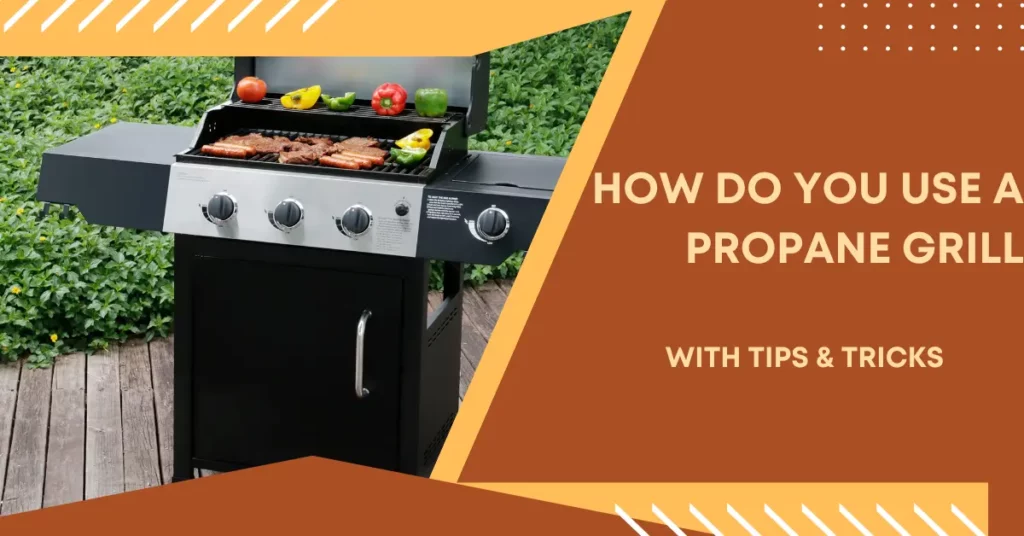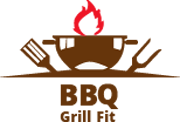This post may contain affiliate links. If you use these links to buy something we may earn a small commission. Thanks.
Grilling is a beloved cooking method that brings out the rich flavors of meats, vegetables, and even fruits. Among all grill types, propane grills are favored for their convenience, ease of use, and quick heating capabilities. Whether you are a beginner or looking to perfect your grilling skills, this comprehensive guide will walk you through everything you need to know about safely and effectively using a propane grill.
Preparing the Grill
1. Choose a Safe Location
Safety is a top priority when using a propane grill. Improper placement can lead to fire hazards or gas buildup.
Best Practices for Placement:
✅ Set up the grill outdoors in an open area. Never grill inside a garage, shed, or enclosed space.
✅ Maintain a minimum distance of 10 feet from structures, fences, and overhanging branches.
✅ Position the grill on a stable, non-flammable surface such as concrete or a stone patio.
✅ Keep children and pets at a safe distance.

2. Inspect the Grill and Propane Tank
Before igniting the grill, a thorough inspection ensures safety and proper function.
🔹 Check for Leaks: A propane leak can be dangerous. To test, mix dish soap and water in a spray bottle and apply it to the gas hose and connections. Open the propane tank slightly—if you see bubbles forming, there is a leak. Turn off the gas immediately and replace the hose or tighten the connection.
🔹 Examine the Grates & Burners: Ensure no debris or grease buildup is blocking the burner ports. Clean any stuck-on food from the grates.
🔹 Check the Drip Tray: Grease buildup in the tray beneath the grill can cause flare-ups. Empty and clean it before every use.
3. Open the Lid
Before igniting the grill, always keep the lid open. This prevents unburned gas from accumulating inside, which could cause a dangerous flare-up when ignited.
Igniting the Grill
1. Turn On the Gas Supply
Slowly open the propane tank valve by turning it counterclockwise. Opening the valve too quickly can trigger the safety mechanism in the regulator, reducing gas flow and making ignition difficult.
2. Start the Burner
There are two common ways to ignite a propane grill:
✅ Electronic Ignition:
- Turn the burner control knob to the “Start” or “High” position.
- Press the ignition button. You should hear a clicking sound as the spark ignites the gas.
✅ Manual Ignition (if the igniter fails):
- Turn one burner to the “High” setting.
- Use a long-reach lighter or match to ignite the burner.
- Once the first burner is lit, turn on additional burners as needed.
Troubleshooting:
❌ If the grill doesn’t ignite, turn off the gas and wait 5 minutes before trying again. This allows any accumulated propane to disperse safely.
Preheating the Grill
🔥 Why Preheat?
Preheating is crucial for cooking food evenly and preventing it from sticking to the grates.
Steps to Preheat:
- Close the lid and turn all burners to high heat.
- Allow the grill to heat for 10-15 minutes until the temperature reaches 400-500°F.
- Reduce the heat if needed before adding food.
🔹 Pro Tip: After preheating, brush the grates with a grill brush to remove any leftover residue.
Cooking on a Propane Grill
1. Adjust Heat Zones
Creating different heat zones allows for better control while cooking multiple items at once.
- Direct Heat (High Temperature, 400-500°F): Best for searing steaks, burgers, sausages, and vegetables.
- Indirect Heat (Low to Medium, 250-350°F): Ideal for slow-cooking meats like ribs, whole chicken, and pork shoulders.
2. Oil the Grates
Lightly brush the grill grates with oil using tongs and a paper towel to prevent food from sticking. Use high-smoke-point oils like canola, vegetable, or avocado oil.
3. Place Food on the Grill
✅ Use tongs or a spatula to prevent burns.
✅ Leave space between food items for even heat distribution.
✅ Keep the lid closed as much as possible to retain heat and enhance flavor.
4. Monitor and Flip as Needed
- Flip meats only once for juiciness. Avoid pressing down on burgers or steaks, as this releases flavorful juices.
- Use a meat thermometer for accuracy:
- Chicken: 165°F
- Beef & Pork: 145°F
- Burgers: 160°F
- For vegetables, rotate them periodically to avoid burning.
Shutting Down the Grill
1. Turn Off the Burners
Set all burner knobs to the off position.
2. Shut Off the Propane Tank Valve
Turn the propane tank valve clockwise until completely closed. This prevents leaks and conserves fuel.
3. Let the Grill Cool Down
Keep the lid open for 10-15 minutes before touching or cleaning any parts.
4. Clean the Grates and Drip Tray
- While the grates are still warm, use a grill brush to scrape off residue.
- Empty and clean the drip tray to prevent grease fires.
Maintenance and Storage
1. Regular Cleaning
- Deep clean the grates, burners, and drip tray every few weeks.
- Check the burners for clogs and clean them using a small wire brush.
2. Cover the Grill
- Always use a grill cover when not in use to protect it from rust and weather damage.
3. Store the Propane Tank Safely
- Always store propane tanks upright in a well-ventilated area.
- Never store the tank indoors or in direct sunlight.
Common Propane Grill Mistakes to Avoid
🚫 Skipping the Preheat: Results in food sticking to the grates.
🚫 Overcrowding the Grill: Blocks airflow and leads to uneven cooking.
🚫 Pressing Down on Meat: Causes flavorful juices to escape, making the meat dry.
🚫 Not Checking the Gas Level: Running out of propane mid-cook is frustrating—always check before grilling!
Conclusion
Using a propane grill is simple when you follow the right steps. From proper setup and ignition to cooking techniques and shutdown procedures, mastering the basics ensures a safe, efficient, and delicious grilling experience every time.
✅ Key Takeaways:
✔ Always check for gas leaks before grilling.
✔ Use direct and indirect heat zones to cook food properly.
✔ Preheat your grill for 10-15 minutes before cooking.
✔ Regular cleaning prevents flare-ups and extends the grill’s lifespan.
